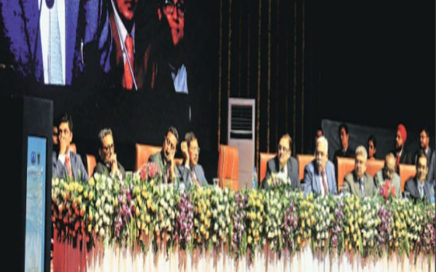Nagpur: The Government of India is planning a major move to unify its four Flight Information Regions (FIRs) in Delhi, Mumbai, Kolkata and Chennai, into one continuous airspace in Nagpur and have harmonized Air Traffic Management from Nagpur which has a unique central location in the country, media reports said on Thursday.
The move is expected to enhance safety, reduce carbon footprint, reduce separations between flights and have more fuel-efficient flight paths for aircraft.
The Airports Authority of India (AAI) has asked for a Detailed Project Report (DPR) to be made for Indian Single Sky Harmonized ATM (Air Traffic Management) at Nagpur (ISHAN) and to understand the technology available in Indian and the global market for the job.
India has four Flight Information Regions (FIRs) — Mumbai, Kolkata, Delhi, Chennai and a sub-FIR in Guwahati. The Nagpur Air Traffic Control is located in the central part of the country and the government is planning the move to unify all four, said the reports.
The reports said that the implementation of the harmonisation of FIRs would be beneficial to the country in all ways. Having a harmonised ATM is a win-win situation for all. This is because it will not only enhance safety, reduce pollution, fuel, and time but also reduce the workload of the air traffic controllers.
If this plan is implemented, the air traffic controllers of every area control would not be required to coordinate for domestic flights flying above 25,000 ft (flights in the upper airspace) as they would all be handled by Air Traffic Controllers (ATCOs) in Nagpur. The ATCOs in every region or airport would then only work to guide the flights approaching or taking off from an airport until it enters the upper space which is referred to as ‘Area control’ in aviation parlance, the reports said.
Nagpur Airport is managed by MIHAN India Limited (MIL), which is a joint venture between state government’s Maharashtra Airport Development Company (MADC) and AAI. The air traffic management, however, rests with the AAI.
The Nagpur Airport, which does not handle many flights as compared to the bigger airports in the country, remains an important centre in terms of air traffic management. The Nagpur ATC handles as many as 1,500 aircraft during a day. These include both domestic and international planes flying over Nagpur skies. The international traffic increases during the night.
The boundaries of Nagpur ATC extend up to Bhopal and Lalitpur in Uttar Pradesh in north, towards west it goes till Aurangabad and Indore. The eastern limits extend till Jagdalpur in Chhattisgarh, and down south it’s beyond Adilabad in Telangana.
Lately, Nagpur ATC was also part of an exercise to reduce the horizontal distance between two aircraft in the air to 5 nautical miles from 10 earlier. It is now possible to allow more aircraft at the same altitude given the equipment the Nagpur ATC has.
Benefits of Nagpur:
The single continuum FIR would yield a lot of benefits in terms of safety, efficiency, user satisfaction, reduced carbon footprint and optimum manpower utilization, the reports say. “To have most efficient utilisation of airspace in terms of air traffic capacity the airspace route structure and sector boundaries are required to be restructured holistically that will benefit all stakeholders. The surveillance and communication gap areas have to be minimised to reap the benefits of the Single Sky Harmonized ATM with reduced separations and fuel-efficient flight paths,” the reports added.
The unification of the four Flight Information Regions (FIRs) in India into one continuous airspace in Nagpur aims to streamline and enhance air traffic management (ATM) operations in the region.
The implementation of Indian Single Sky Harmonized Air Traffic Management at Nagpur (ISHAN) would require a thorough study of current and projected air traffic growth and the challenges related to the management of increased air traffic.

















